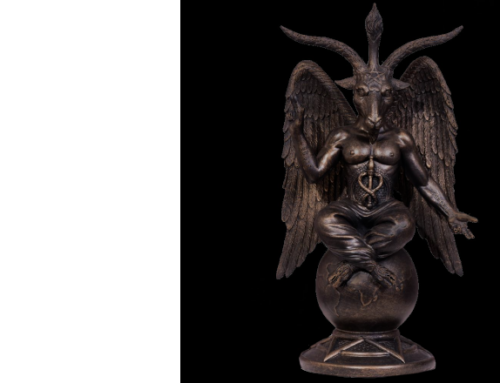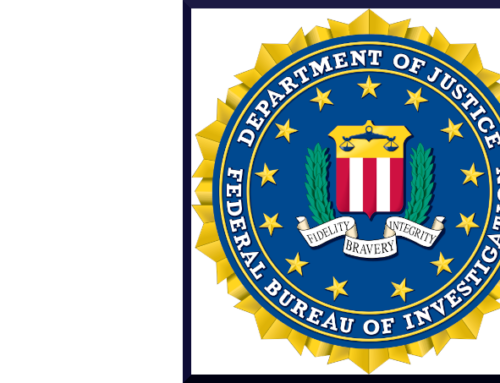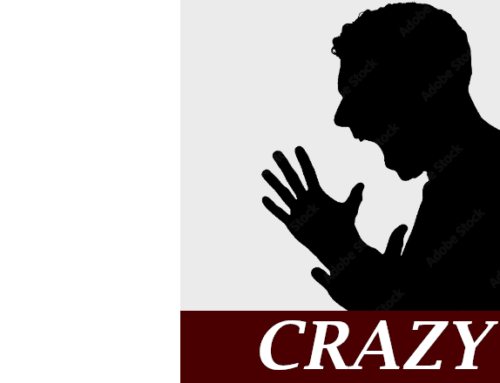Catholic League president Bill Donohue assesses a report on alleged sexual abusers in the Illinois dioceses that was released on March 20:
There are many news stories about the 395 priests in Illinois who have been named in a report on clergy sexual abuse, but most of them are incomplete. For starters, not all of those named are priests, not all of them are from Illinois, and most of the listings are unsubstantiated accusations.
I have read the report. I have also read what five of the six dioceses have said about it (one diocese, Belleville, has said nothing). Let’s start with the man behind the report, Jeffrey Anderson.
Who is Jeff Anderson?
As a young man, Anderson was a hippie and a college dropout; he finally graduated from the University of Minnesota. He made it to law school, though he wasn’t known for his scholarship. However, in his last year at William Mitchell College of Law, he found his stride: He successfully defended a homeless black man who urinated in a church.
Anderson then went on to bigger things. His clients included gay activists who fought bathhouse raids and murderers. A recovering alcoholic, he says his daughter was molested by a therapist.
Anderson has had quite a religious odyssey. He was raised a Lutheran, but that didn’t work out too well. So he became a Catholic. Then he became an atheist—he called himself a “dedicated atheist.” Then he flipped again and became “deeply religious.” The last I read about him he was content to call himself an agnostic.
See the pattern. His first gig was to sue people of faith. He claims his daughter was sexually abused. And his own religious beliefs are a mess. In short, he was destined to sue the Catholic Church.
Anderson loves to sue the Church so much that he once boasted that his goal in life is to “sue the s*** out of the Catholic Church.” He has made good on his word. Filthy rich, in one case alone he netted half a billion dollars in a settlement.
His mission in life is not to defend all victims of sexual abuse, just Catholic ones. That’s why he recently took out ads in New York City newspapers advertising his willingness to defend only victims of Catholic clergy abuse. The 5’4″ activist-lawyer also likes to grease professional victims’ groups: they give him leads on clients and he gives them big checks. That’s quite a tag team. The media, of course, never focus on this collusion.
The Anderson Report
The sexual abuse crisis in the Catholic Church, as experienced in the United States, is long over. This explains why the allegations in the Anderson Report, as it is known, are about old cases. In fact, the report lists accusations going back more than a half-century ago. Of the 395 persons mentioned, 394 are either dead or out of ministry. That leaves one guy.
The report includes deacons, seminarians, brothers, and nuns—not just priests. Some of the priests are from religious orders, and are therefore not under the jurisdiction of a bishop. In other cases, the order priests are not from Illinois, and their alleged offense may not even have taken place there.
How many are truly guilty? No one knows. Even Anderson admits that “in most cases the allegations have not been proved or substantiated in a court of law. Consequently, unless otherwise indicated, all of the allegations should be considered just allegations and should not be considered proven or substantiated in a court of law.”
We did a search of how many news outlets nationwide quoted what Anderson said and found that the overwhelming majority failed to cite his admission. So the public has been duped again.
When it comes to the scandal, duping the public is a common game. How many organizations in the United States, secular or religious, have been subjected to an investigation about sexual misconduct extending back to World War II?
Why is there no appetite for probing ministers, rabbis, public school teachers, psychologists, psychiatrists, guidance counselors, athletic coaches, and the like? Why are the media so lacking in curiosity about this phenomenon? To find out, read the mission statement of the Catholic League on our website.
Anderson’s report critically notes that the Illinois Attorney General’s Office “determined that the Illinois dioceses had received allegations related to sexual abuse for approximately 690 clergy, but had only publicly identified 185 clergy as being ‘credibly’ accused of sexual abuse.”
So what? There is a profound difference between a mere allegation, an allegation deemed credible, a substantiated allegation, and a conviction in a court of law. Is Anderson suggesting that priests are not entitled to due process? What other institution is expected to post the names of those whose accusations have not been deemed credible, never mind substantiated or found guilty? None.
Response by the Dioceses
Fortunately, this time around the bishops and their spokesmen are fighting back. Mary Jane Doerr, the director of the Chicago Archdiocese’s Office for the Protection of Children and Youth, expressed her exasperation with the report. “What’s frustrating to me is the lists represent the past. And it was not a good past, but we don’t do that anymore. That’s not what’s going on today.”
Anderson says that the purpose of his report “is to disclose the scope of the peril that the Catholic Bishops have chosen not to disclose and keep secret.” John O’Malley, the Archdiocese of Chicago’s special counsel, isn’t buying it. “These names were not secret. There was not an effort to conceal them. They were all reported to the authorities.”
O’Malley also takes issue with Anderson for portraying as perpetrators those who have been investigated and cleared. In one particular case, the special counsel said, “Police didn’t decide he was a perpetrator. The archdiocese did not. Jeff Anderson did. People are entitled to their reputations until proven otherwise.”
Andrew Hansen, a spokesman for the Springfield diocese, aptly called Anderson’s report “an impressive professional marketing brochure, but it does not represent, as Mr. Anderson suggests, a thorough and diligent review of the publicly available facts, and it is highly misleading and irresponsible.”
The official statements released by those dioceses which have spoken publicly were not shy in their defense.
The Archdiocese of Chicago, following what O’Malley said, charged that Anderson “conflates people who have been accused, but may be innocent, with those who have substantiated allegations against them, referring to all as perpetrators.”
The Diocese of Joliet said, “All of the allegations reflected on Mr. Anderson’s list which were made to the Diocese of Joliet have already been reported to law enforcement authorities.” Furthermore, the diocese argued that “All credibly accused priests have been removed from ministry.”
The Diocese of Peoria maintained that 26 of the 29 priests named in the report have been reported to the authorities, and most of them are dead. The diocese contested the listing of the other three: one never had an accusation made against him; one accusation was never substantiated; and one was immediately placed on administrative leave and reported to the authorities, contrary to what Anderson said.
The Diocese of Rockford said Anderson’s list “includes names already disclosed by the Rockford Diocese along with other names previously disclosed publicly but which are not on the Diocese’s list of those substantially accused because the accusations either have not been substantiated or are completely without merit.”
The Diocese of Springfield said it had already posted the names of 19 priests on its website who were credibly accused, “none of whom are in active ministry, and 13 of whom are deceased.”
My Analysis
In some important ways, Anderson’s report is consistent with the studies conducted by the John Jay College of Criminal Justice on priestly sexual abuse. For instance, most of the alleged offenses took place in the 1960s, 1970s, and 1980s. Significantly, most of the victims were postpubescent males, victimized by homosexual priests. But, of course, the newspapers are not reporting on this, so the gay cover-up continues.
Regarding the listings, it is hard to come to definitive conclusions when the data are not uniform, but there are some entries that deserve to be discussed.
The report loses credibility when it lists people like Brother John W. McMuldren, C.S.C. He was from Alaska, spent one year in Illinois, and in the lone case where charges were made against him (in Alaska), he was found innocent.
A nun, Sr. Norma Giannini, was charged with sexually abusing two teenage boys: one said he was abused more than 100 times and the other said he was molested between 60 and 80 times. Such cases strain credulity.
It would be unfair to cast suspicion on all of the entries. Indeed, there are some that cry out for an explanation.
Why was Fr. Kenneth M. Brigham of the Archdiocese of Chicago able to partake in a “sex-ring with other priests”? Others must have known about this, so why didn’t they act?
Ditto for Fr. Victor Stewart. He was another priest from the Chicago archdiocese who participated in a sex club.
Fr. Roger P. Schoenhofen, O.M.I., was a priest in the Diocese of Belleville who participated in a “ring of homosexual priests,” sexually abusing young men at St. Henry’s Seminary. Others must have known about this, so why didn’t they act?
These are the most disturbing stories I read in the report. Bad as they are, we must keep in mind that all but one of the 395 persons mentioned in the report are either dead or are no longer in ministry. This is not an anomaly: this is true across the United States.
Yet Anderson has the gall to say in his report that “The danger of sexual abuse in Illinois is clearly a problem today, not just the past.” He is a liar. He knows the evidence is just the opposite.
Anyone who thinks Anderson is in this game purely for the money is missing the point. He couldn’t possibly spend all the money he has. No, he is in it for the same reason that so many others are in it: The name of the game is to “Get the Catholic Church.” It is not greed that motivates the Church haters, it is ideology.
Contact: Jeff@AndersonAdvocates.com







